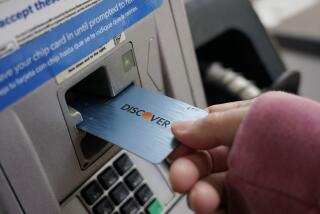Bill Would Increase Fuel Economy Standard by 40% : Automobiles: A Nevada senator’s measure is back, targeting 40 m.p.g. for cars within a decade. But angry companies say that’s not realistic.
DETROIT — It’s back. And it’s sending shivers through Detroit’s executive offices.
Not a horror film, not a cold wave, not even a new assault by the Japanese, but the latest version of the Bryan bill. Sponsored by Sen. Richard Bryan (D-Nevada), the measure would boost the fuel economy of the average American car to 40 m.p.g. within a decade. The bill nearly cleared the Senate last year. Now, sponsors say, the war in the Middle East is enough to garner the crucial swing votes needed to push it through.
“We’re back, and this time we intend to win,” Bryan said recently. “We’re going to fast-track it.”
Formally known as the “Motor Vehicle Fuel Efficiency Act of 1991,” the measure would require each car maker to increase the fuel economy of its average passenger car 20% by 1996 and 40% by 2001. The effect would be a national average of 34 m.p.g. by 1996 and 40 m.p.g. by 2001. Presently, Corporate Average Fuel Economy (CAFE) is set at 27.5 m.p.g.
The measure would also require manufacturers to improve the fuel economy of their minivans, pickups and other light trucks.
Not surprisingly, the Bryan bill drew immediate fire from Detroit. Tom Hanna, president of the Motor Vehicle Manufacturers Assn.--the lobbying arm of the Big Three--charged that the proposal is “unachievable with any known technology.”
Bryan’s backers counter that they’ve heard the criticism before. Back in the 1970s, when cars were getting barely 10 m.p.g., the industry said it couldn’t meet the original CAFE goals. Today, however, the typical passenger car gets at least 27.5 m.p.g., the present CAFE standard.
Forty m.p.g. is doable, says David Cole, director of the University of Michigan’s Office for the Study of Automotive Transportation. But not easily, and certainly not cheaply. “The easier-to-play cards are already out of the deck,” Cole said.
Just by improving tires and making cars more aerodynamic, the Big Three boosted fuel economy 3 or 4 m.p.g. But future increases will take billions of dollars of investment in new engines, transmissions and lightweight materials such as plastics and composites, Cole said.
And it is almost certain that to meet the 40 m.p.g. standard, tomorrow’s cars will have to be significantly downsized. Ford Chairman Harold Poling, for example, has said that under the Bryan bill, his company’s largest car would probably be no bigger than today’s compact Ford Tempo.
That would be true not only for the Big Three, but for the Japanese as well.
Toyota, for example, would probably have to abandon its Lexus LS400 luxury car, said John Koenig, Toyota Motor Sales USA’s corporate product planning manager. “We’d essentially become a Tercel and Corolla car company.”
The Japanese are particularly upset with the Bryan bill because it requires each car maker to increase its own fuel economy by a set percentage.
So those who already produce the most efficient vehicles would have to make the biggest gains in the future.
“No question this is obviously targeted against the imports, who have done a better job developing fuel-economical vehicles,” Koenig said.
Auto industry leaders are hoping to delay debate on the Bryan bill until at least August. That’s when an independent report is due from the National Academy of Sciences assessing the technical feasibility of future CAFE increases.
Bryan, however, said that in light of the Middle East crisis, there is no time to waste. Imported oil is the largest factor in the U. S. trade deficit, and it provides a weapon to a dictator like Saddam Hussein.
By 2001, Bryan said, his bill would save an estimated 2.8 million barrels of oil a day. He said that would go a long way toward restoring America’s energy independence.






